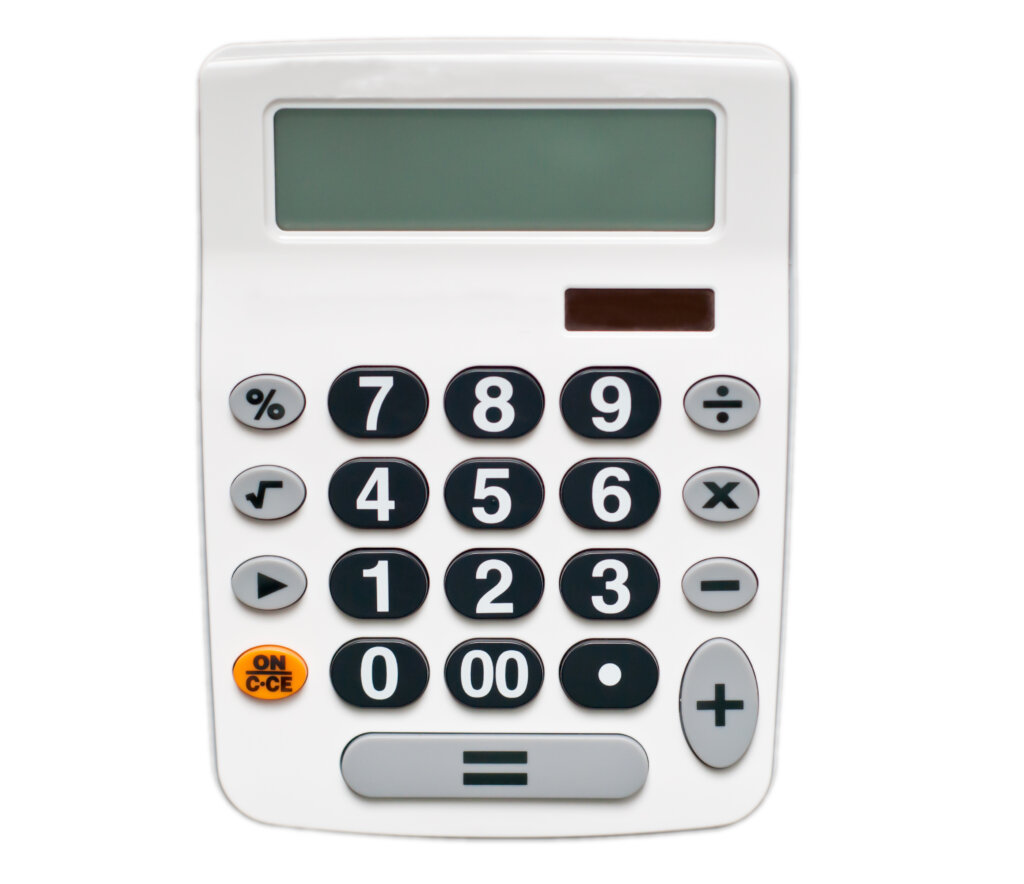What is a kWh?
Your electricity usage is measured in kWh. A kWh, or kilowatt-hour, is equivalent a power consumption of 1,000 watts for 1 hour.
How do I know how much my appliance, space heater, etc. will add to my electric bill?
Every electrical device requires a certain amount of power (measured in watts) to operate, and power over a period of time is energy (measured in kWh). Here’s how to calculate energy:
Watts (W) ÷ 1,000 = Kilowatts (kW)
Kilowatts (kW) x Hours of Use = Kilowatt Hours (kWh)

Check out our online calculator that can be used to calculate energy consumption and energy cost of appliances.
An example is an electric space heater, as many of the common models are 1,500 Watt (W) units. Just one 1,500 W space heater running continuously for 30 days can contribute approximately 1,080 kWh, or approximately $125-$150 to an electric bill!
1500 W space heater = 1.5 kW
1.5 kW x 24 hours a day = 36 KWh
36 kWh per day x 30 days of use = 1,080 kWh used over 30 days!
What uses the most energy in my home?
If you have electric heating, your electric heating system and water heater are typically the two single largest consumers of electricity in your home. Together, they typically make up approximately 50% of your total energy consumption.

Learn more about winter heating and the impact it has on your electric bill in our Wire-to-Wire with Nolin RECC podcast episode
How can I improve my Energy Efficiency?
We offer several tools to aid our members in managing their energy usage and efficiency. Please check our our Energy Savings page for several ways you can monitor, manage, and improve your energy usage and efficiency.

DOES OUTSIDE TEMPERATURE REALLY IMPACT HOW MUCH ENERGY I USE?
December 23-26, 2022 saw sustained temperatures below Zero (0) degrees. The jump in usage shown on an actual member’s account on the left is primarily a result of the extra energy used to keep a 1400 sq ft, well-insulated home between 64-68 degrees.

IF YOU HAVE A HEAT PUMP, SET IT AND LEAVE IT!
For heat pumps, we recommend “set it and leave it” – which means leaving the thermostat on one consistent temperature setting. As an example, someone with a heat pump sets to their thermostat to 65 while they’re away from home. When they get home, they set the thermostat to 70. Changing the thermostat by more than a couple of degrees at a time will cause the auxiliary (supplemental) heat strips to come on. As this is a much less efficient technology, it can erase any “savings” from setting the thermostat to a lower temperature while away and may ultimately cost more. That’s why we recommend “set it and leave it” on one temperature for a heat pump.
The same is not true for someone who has an electric furnace. With a furnace, lowering the temperature while away will reduce energy usage and costs. An electric furnace moves air across electric resistance heating elements, which is much less efficient than a heat pump in normal operation. For any amount of time the unit isn’t running, they’re saving money on energy costs.
HOW YOU HEAT YOUR HOME MATTERS!
Members should keep in mind that maintaining an adequate temperature in their home is important to avoid freezing pipes, but this temperature can vary depending on insulation levels, location of plumbing, etc. Ultimately, members must decide what works best for your specific situation. In general and for either a heat pump or electric furnace, we recommend a thermostat setting of 68-70 degrees in the winter for energy savings. An electric furnace could also be set lower while away for additional savings.
How do I know if I have a heat pump or electric furnace? The easiest way to tell is to look at the thermostat. If they have an emergency heat setting or switch, that’s an indication of a heat pump.
Emergency heat mode on a heat pump is for emergencies. This mode should be used in the event of a failure of the outdoor compressor unit or when the outdoor unit is covered in ice. Emergency heat is expensive. In emergency heat mode, your heat pump will operate exclusively with the resistive heat strips and therefore has the efficiency of an electric furnace. It should only be used when necessary.
Check out more details below about heat pumps:
Heat pumps have various efficiency ratings that are important to understand when comparing and selecting units. Generally, more energy efficient units are more expensive initially though they consume less energy over time.
-SEER2 (Seasonal Energy Efficiency Ratio): Measures the cooling efficiency of a heat pump or air conditioner. A higher rating means higher efficiency.
-HSPF2 (Heating Seasonal Performance Factor): Measures the heating efficiency of a heat pump. A higher rating means higher efficiency.
All new residential central air-conditioning and air-source heat pump systems sold in the United States are required to meet minimum energy efficiency standards, and new metrics known as SEER2/HSPF2 were created that are different metrics than the SEER/HSPF that were used previously. For our region, a 14.3 SEER2/7.5 HSPF2 is the minimum efficiency requirement for a split system heat pump. Please note that these are minimum ratings and we recommend ENERGY STAR® or greater ratings for improved energy efficiency. For a split system heat pump, the ENERGY STAR® standard is 15.2 SEER2/7.8 HSPF2. Be sure to check out our Rebates!
ENERGY STAR® offers a Savings Calculator and a Life Cycle Cost Estimate tool that may be helpful in calculating savings and costs for upgrading your HVAC system.

